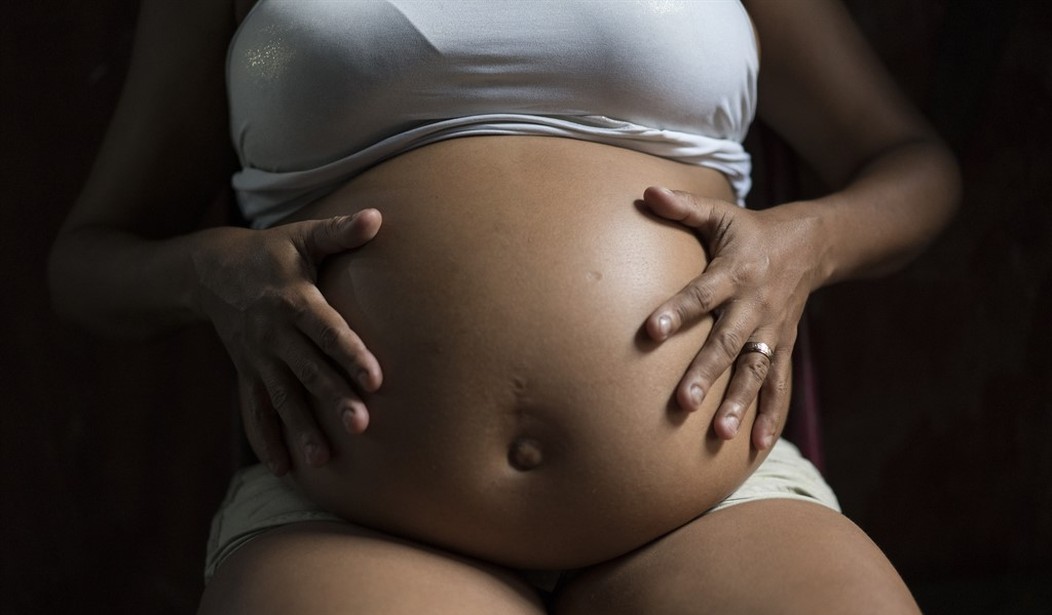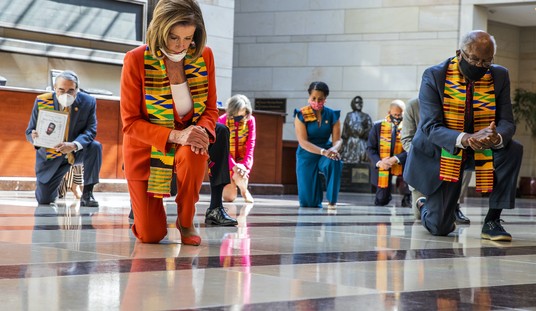Yesterday when I was writing about the oral arguments at the Supreme Court over a law which would limit abortion to 15 weeks of pregnancy, I wound up going down a rabbit hole about “quickening.” Quickening isn’t something you hear a lot about anymore but historically it was considered a significant milestone in pregnancy, the moment when the mother first feels the child move inside the womb.
These fetal movements inside the womb are discussed in the Bible but were also of interest to the ancient philosophers, some of whom had studied what we would now call embryology by systematically looking at the development of chicks inside eggs. Here’s what Aristotle wrote about the rearing of infants in his Politics:
As to the exposure and rearing of children, let there be a law that no deformed child shall live, but that on the ground of an excess in the number of children, if the established customs of the state forbid this (for in our state population has a limit), no child is to be exposed, but when couples have children in excess, let abortion be procured before sense and life have begun; what may or may not be lawfully done in these cases depends on the question of life and sensation.
His statement that no “deformed” child should be allowed to live is pretty shocking to modern ears but when it comes to the practice of exposure, i.e. leaving unwanted children outside to die, he says abortion is preferable “before sense and life have begun.” So the question of when abortion should be allowed is a very old one going back at least to Aristotle and was tied to the idea of when sense and life begins. Aristotle’s own views on the matter were that sense and life began with quickening:
The term quickening comes from the root word quick, an archaic synonym for “living.” (Think “the quick and the dead.”) The concept goes back at least to Aristotle, who believed that male fetuses take on human characteristics after 40 days in the womb, and female fetuses after about 80 days. For Aristotle, the quickening represented the moment when those fetuses became “animated.” At that point, the fetus becomes its own being—it achieves “ensoulment,” to invoke another archaic term.
Hundreds of years later, Christian scholars adopted some of Aristotle’s views including the idea that quickening was a significant moment of transition, one that had important moral and even legal impact:
Aristotle’s belief about the beginning of life, like many of his other opinions, greatly influenced philosophers and theologians for centuries to come. Indeed, St. Augustine and St. Thomas Aquinas both cite a point after conception, generally the point of quickening, as the moment at which the life in the womb becomes human or ensouled. Theologians often took the distinction between un-quickened and quickened fetuses one step further, however, and declared that abortion after quickening was a highly immoral action, worthy of immediate excommunication and/or the legal penalty for homicide.
And those views eventually made their way into common law:
British common law, eventually imported to Colonial America, outlawed abortion only if it took place after the quickening. Likewise, a pregnant woman could not be executed post-quickening. The English jurist William Blackstone wrote in 1770, “To be saved from the gallows a woman must be quick with child—for barely with child, unless he be alive in the womb, is not sufficient.” In other words, a fetus whose movements could not yet be detected was not yet fully alive. An 1812 Massachusetts court case, Commonwealth v. Bangs, confirmed that pre-quickening abortions “would remain beyond the scope of the law.” Even though states began to pass criminal abortion statutes in the 1820s, courts before 1850 rarely heard cases involving pre-quickening abortion.
Quickening tends to happen around 18 weeks, though it’s said that women who’ve been pregnant before may detect movement of their subsequent children as early as 16 weeks. Of course with the advent of the stethoscope and, more recently, ultrasound we now know that the fetus is moving weeks before the mother can first detect it.
What’s the point of all of this? Well, I think there are at least a couple points worth recognizing. The first is simply that the debate over abortion and when life begins is one that human beings have been having for a very, very long time. And that suggests that this isn’t going to be settled to everyone’s satisfaction probably ever. No matter what the Supreme Court says tomorrow or next June, lots of people will continue to disagree because that’s the nature of this particular issue. We shouldn’t be surprised that the Roe consensus didn’t hold. In fact, we should be surprised anyone ever thought it would.
The other point I think all of this raises is that despite disagreements on the exact moment, there is a very long-standing human intuition, across time and culture, that at some point there is a recognizable transition happening within the womb. At some point, it’s not a blob of tissue it’s a human being, a baby.
Modern polling on abortion shows this same intuitive division. A majority of Americans (61%) say they support the right to abortion in the first trimester, but by the second trimester, support for abortion drops to 34%. And by the third trimester it’s under 20 percent. We may not talk about it in terms of quickening anymore, but collectively we’re still relying on that same intuition about human development.
Of course our current legal regime on when to draw that line isn’t built around quickening. Instead it’s built around the idea of viability which is somewhat odd. Viability isn’t a measure of whether the unborn child is human or alive or deserving of protection, only of whether he or she can survive outside the womb. It’s literally based on the ability of the premature infant’s lungs to breathe, one that pushes the time abortion is legal in this country pretty late relative to what is allowed in most other countries in the world.
Again, I don’t think we’re ever going to make everyone happy on this issue, but my own view is that Roe and Casey went too far away from that general intuition most people have about human development. On an issue like this, we’ll never agree but our current one-size-fits-all legal approach isn’t working. We’d be better off letting people argue about it at the state level but in order for that to happen, we need to get rid of Roe.








Join the conversation as a VIP Member